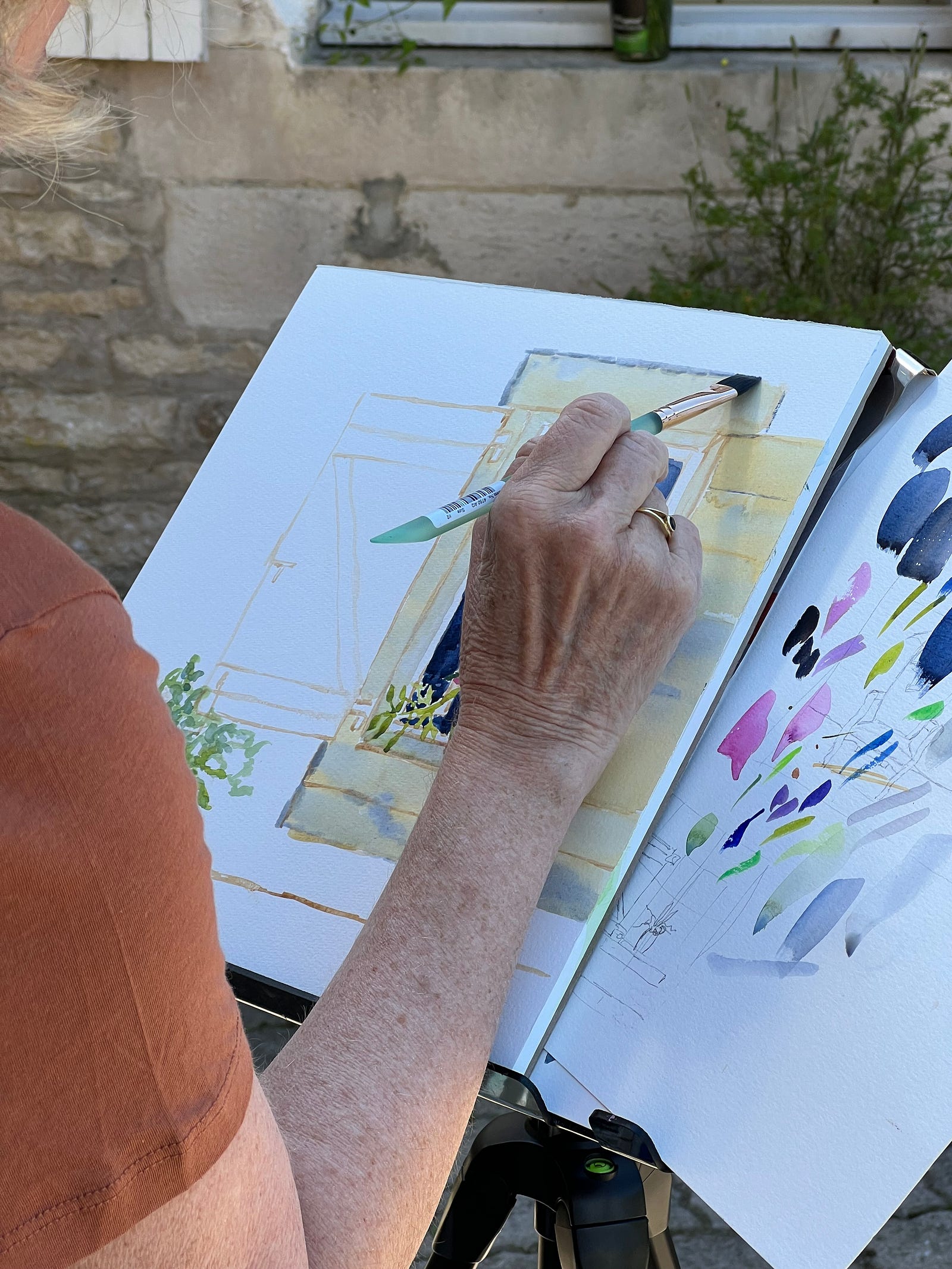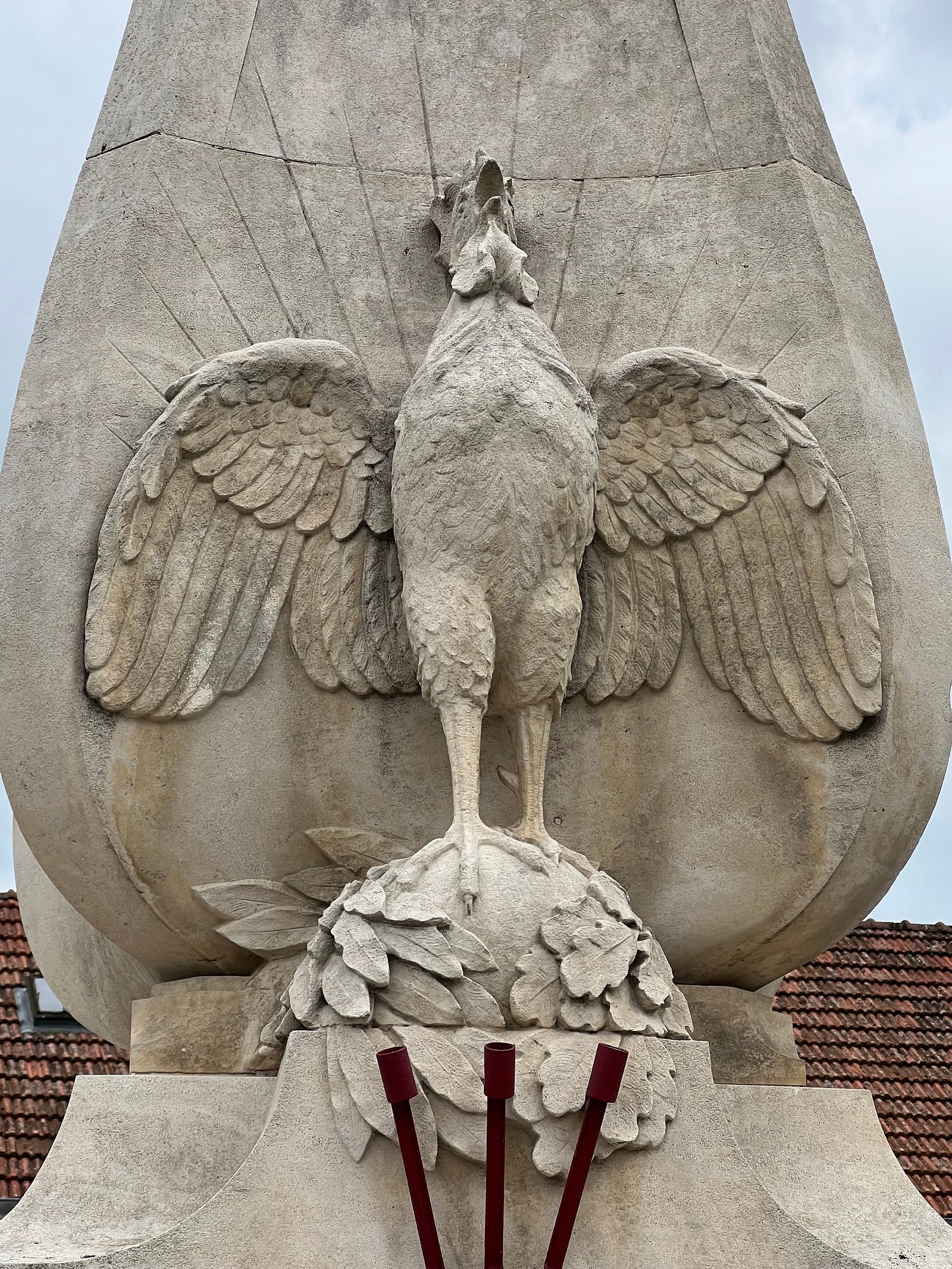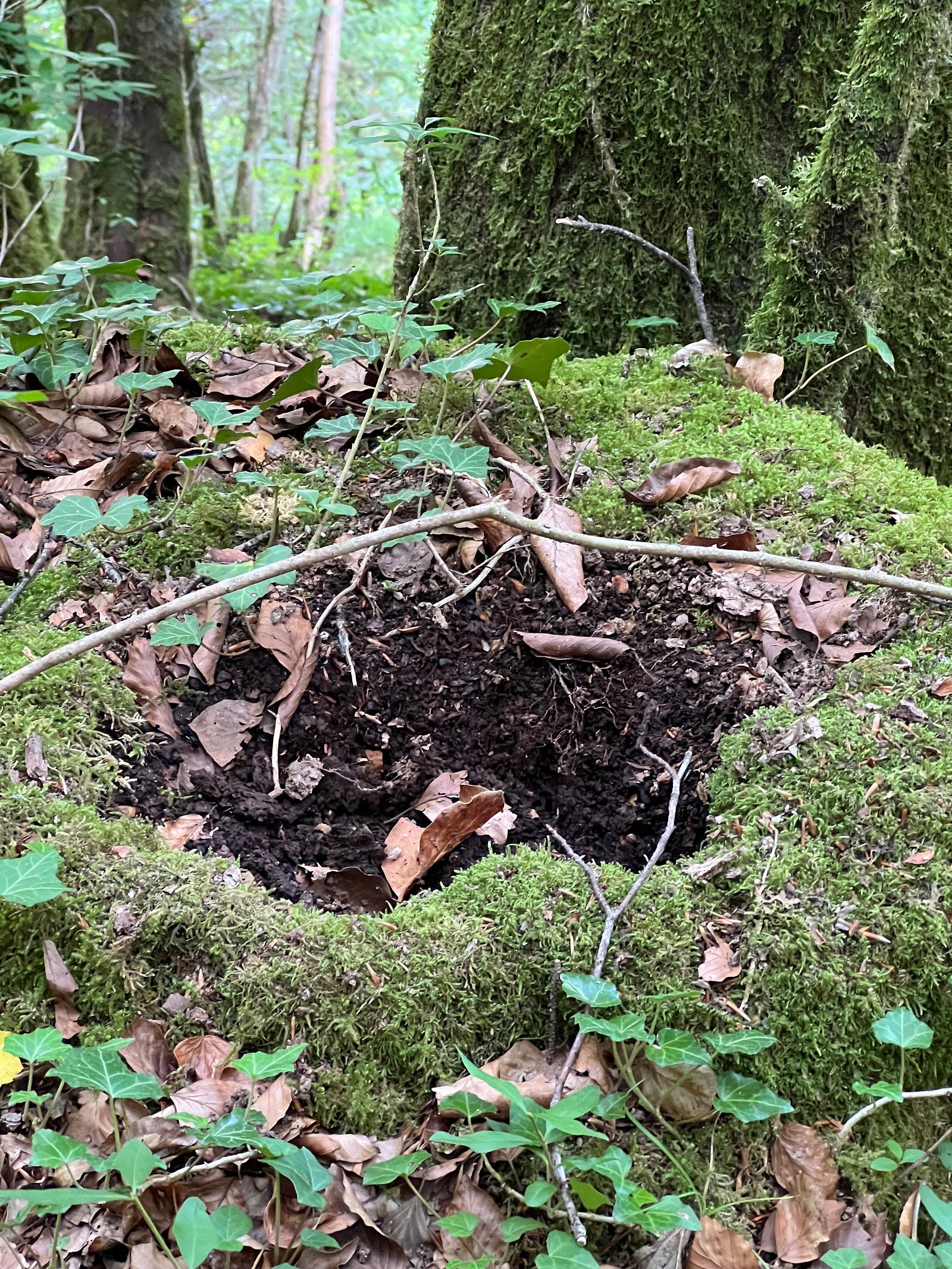Sermon: Found Objects as Art and Hope
Published by Ronald Steed,
PEACE | PRACTICE | ART | SERMON
Found Objects as Art and Hope
St. Andrews Episcopal Church, Madison, CT ¹. Taken from Matthew 24:18–22 ²
Mitigating the Madness
It seems like something is set loose in the world. Do you feel it too? Wars and rumors of wars? Every generation thinks that the world is going to hell-in-a-hand-basket, and ours is no different… but ya-hoo!
Bad-enough things seem to have taken a turn for even worse things. It looks like multiple forces of destruction are intensively and simultaneously at work everywhere. And just when we think we can’t stand ONE MORE THING, a new thing comes darkly with breathtaking force and sometimes, violence.³
My wife Roxanne and I have been feeling something… a nudge toward resistance; things we can do and commend to others, however small, that will mitigate or stop the madness, or at least add some peaceful counterweights.
And so, we have written a book, published today, called Focal Points in France; Artful Practices that Bring More Peace. Together, we have prepared 20 meditations; Roxanne painted a scene, and I composed a haiku and wrote a meditation around small peace practices that anyone can take on, to release more peace into the world. It seems ridiculous and trite to suggest that art can act as a force against the powerful forces of darkness and violence at work all around us, but that is what we are proclaiming.

Roxanne at work, painting found-objects | Photo by Ron Steed
One of the practices we painted and wrote about is the practice of making art out of found objects. The practice is to make meaning in the ordinary and cast-aside.
Wildflowers in a Pickle Jar
Two years ago, Roxanne and I wandered about the grounds of a Chateau in France looking for flowers as found-objects. In early July, the fields were teeming with them. Roxanne framed them up in another found-object, a cornichon jar, one of our favorite snacks. The next morning, the jar of flowers was still joyfully beautiful and hopeful. So we painted, composed, and wrote about the experience of framing up found objects.
A artist friend of ours, Peter Leibert, also transforms found-objects into art; pieces of drift wood, architectural elements, old toys. Or perhaps, more in keeping with Peter’s thinking, the object is ALREADY art; he just helps to reveal its nature to the world. On beach-walks, in flea markets, or around abandoned houses, he intuits something in these objects.
Regarding the importance of the frame Peter creates to surround or lift-up the object, he says, "framed, the composition says this is mine… I did this… I found meaning in this, and I invite you to find meaning in it as well, or in your OWN found-objects."
Found-Objects Can be Sacramental
Some of you remember writing haiku in 4th grade. Three lines with 5, 7, and 5 syllables. In traditional haiku, the poet tries to capture what is called "a haiku moment", a flash of profound insight. "Haiku moments" are found-objects too… experienced in nature and framed with words that, at their best, might say something about both nature and humanity. For a musician, an emotion can be a found-object, with music as its frame. For the listener or performer, music itself can be the found-object, with an emotional experience as the frame.

Found objects can be all kinds of things | Photo by Ron Steed
Found-objects can be people, friends, or strangers, framed up in love. And found-objects can be sacramental: "outward and visible signs of inward and spiritual grace", a very Anglican idea that creation offers sacramental found-objects, enchanted (sung into being) by the Spirit.
And, in a sense, the found-object itself will assist with the framing. The jar of wildflowers flowers paints the picture… the words write the haiku… the emotion composes the score. There is a spiritual dimension to found-objects that has its own will above and beyond that of the artist. This is true, whether or not you consider yourself an artist. We just have to get out of the way… ask our egos to stand aside for a moment, open our heart-space and let the object help us with the frame.
The Trauma of Found-Objects in War
In war, every found-object is invested with threat; they could be land mines, booby traps, and distractions that invite attack from another direction. Rather than framing such objects as art, the combatant PENETRATES them with ordinance. Soldiers, parents, and children alike experience the trauma of war where every found-object and found-person is subject to destruction.

War Memorial, Andelot, Fr. | Photo by Ron Steed
Poet and friend TerriAnn Walling, says "Collective traumas, such as constant wars, patriarchal dominance, and colonial subjugation have shaped society through the pursuit of power." And, she says, even non-participants can experience the trauma of war through media: "The emergence of the moving picture uniquely transformed the experience of connectivity… horrific events and stories were broadcast into people’s homes without understanding the implications of witnessing trauma at a rapidly shared scale."
For so many, healing the trauma of actual or witnessed warfare can be very challenging. TerriAnn’s innovative healing approach brings pairs of traumatized people together in safety and in the absence of power, to write and reframe poetry-mosaics that lavish healing on trauma-induced wounds.
We need artful acts of peace to give us a felt-sense of refusal to participate in a world that seems determined to traumatize all of us.
Leaves, Sticks, Rocks
Last Good Friday, I watched a young child as we moved from waypoint to waypoint along the stations of the cross in the woods outside. As soon as we would pause, this child would set about gathering natural materials, leaves, sticks, rocks, and set them together in an artful display. It was as if, to each object she found, she would whisper "follow me… follow me". This is what making peace looks like; gathering what you have at hand into something beautiful and full of meaning.
Over the last year, we have been working with Molly Fahey, the Social services coordinator at Madison Youth and Family Services to help people in our community. Molly knows very well, better than most, about the poverty that is there to be found, by those willing to look, here in Madison. Sometimes, she finds a family, who makes a little too much income to qualify for state aid, but who desperately need help nevertheless. That’s when Molly calls us to help with our discretionary funds. Working with Molly has helped St Andrews to expand its view… to be able to search, with Molly’s eyes, over a broader range, for found-objects, our neighbors, and to transform them into flourishing works of human art, at least for a little while.
Transforming found-objects into art is one of these practices Roxanne and I recommend to you. And there is another….
A New Learning: Hope as a Practice of the Present
Not long ago, I received a new learning: Hope as an emotion about the present moment, rather than as a far off day that will be better than today. This present hope has an openness and expectation that God, divinity, the Spirit… something that embodies divine Love, can be found at any moment. Attending hope expresses a certainty that this is so. Children, like the young artist I told you about, get this; there along the woodland path are leaves, sticks, and rocks just begging to be made into art. Rather than hoping for a better future that never seems to come, this form of hope helped our young artist to us tap into love that was right in front of us. It is like a cool, refreshing drink of water in a parched and barren world.

What can be found by us as a beautiful and powerful practice? | Photo by Ron Steed
To our Good Friday artist in the woods, her’s was a HOPEFUL practice, knowing that the ordinary and the outcast is right there, and knowing that her works of art would last for only a little while, and not caring that its elements would scatter again along the woodland floor. Each artwork was a little act of resistance against the world; trivial and ridiculous; beautiful and powerful.
Peter, Andrew, James, and John were found objects; ordinary and cast-aside fishermen, found by Jesus and invested with more meaning than they could imagine. With the simple "follow me" they were gathered from their nets, and framed up in love, as an act of resistance against the violence of Roman occupation. That simple encounter along the shore… so unremarkable, has sent waves of peace propagating through the universe that we still remember today on St. Andrew’s day.
Found-objects are confirmations of hope; they open up the heart so that Love, not war, will be found by us. And more, WE are here to be found-objects by God, just like Andrew was, framed up by deep and abiding Love… and to God’s everlasting delight. There is a LOT we don’t know about God, but for me, God seems to have the same present hope WE have, that at any moment, each of us will be found by God, vibrating like wildflowers in the world as beloved children.
So, go forth with an attending hope and find something… make it into art and invest it with meaning, and you will be putting a stake in the heart of the world’s violence.
¹ This sermon was delivered at St. Andrews Episcopal Church, Madison, CT, in ordinary time, for the Feast Day of St. Andrews (transferred to this Sunday), November 19, 2023
² Matthew 24:18–22
As Jesus walked by the Sea of Galilee, he saw two brothers, Simon, who is called Peter, and Andrew his brother, casting a net into the sea — for they were fishermen. And he said to them, "Follow me, and I will make you fish for people." Immediately they left their nets and followed him. As he went from there, he saw two other brothers, James son of Zebedee and his brother John, in the boat with their father Zebedee, mending their nets, and he called them. Immediately they left the boat and their father, and followed him.
³ The major themes of this sermon are taken from Steed, R. & R. (2023, September 18). Focal Points in France: Artful Practices that Bring More Peace, Found Objects as Art and Hope p33. https://www.amazon.com/Focal-Points-France-Artful-Practices/dp/B0CM1DNS6W?ref_=ast_author_